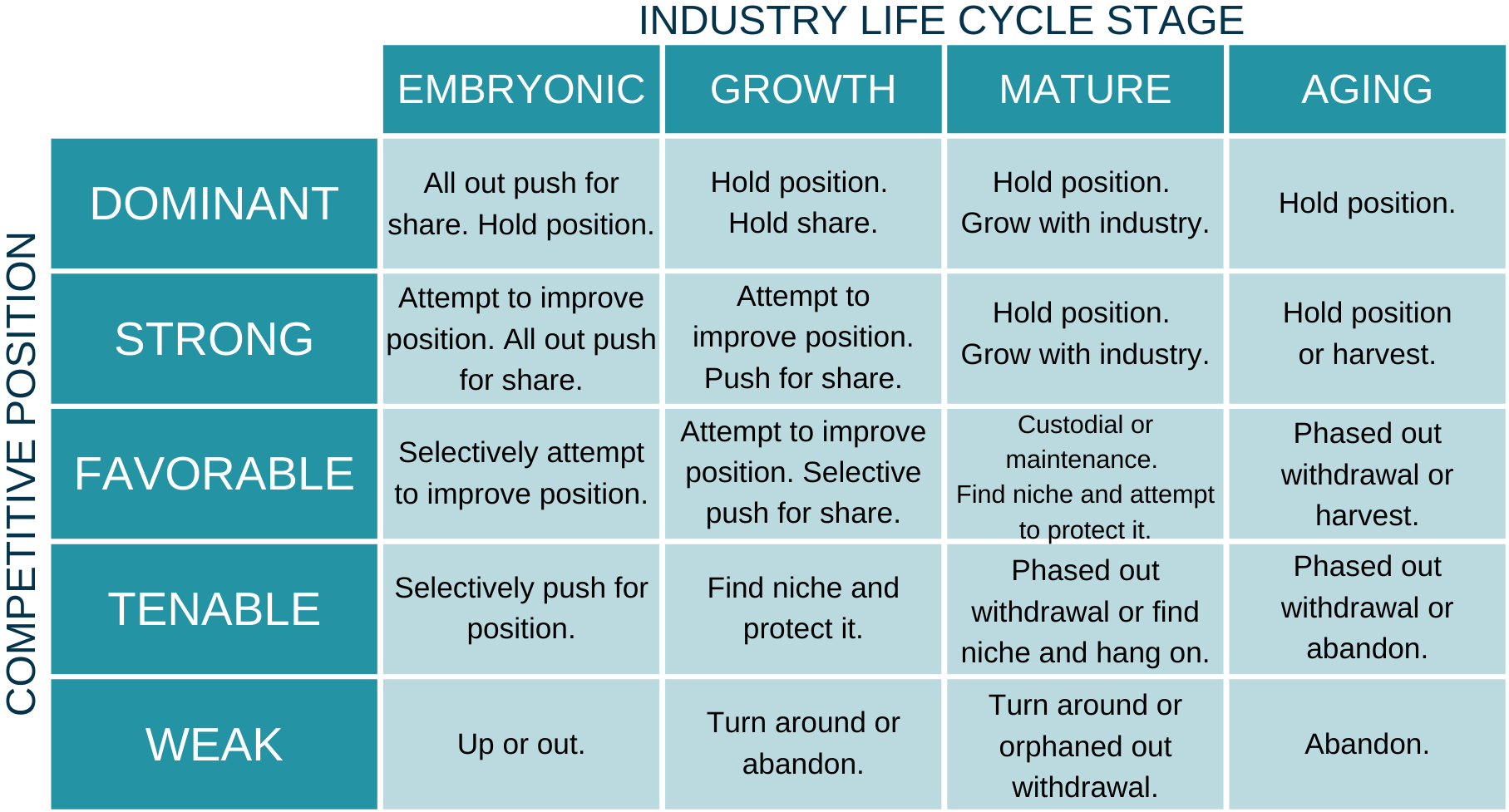The ADL Matrix (or Strategic Condition Matrix), developed by Arthur D. Little, is a strategy tool that will clarify your thoughts while shaping portfolio strategy.
Main Benefits of the ADL Matrix
The ADL Matrix helps you:
- categorize your products based on their potential to generate profit
- decide which distinctive strategy to pursue for each product
- assess the overall strength of your product portfolio
Explanation of The ADL Matrix
The ADL Matrix is based on the concept that a product’s potential to generate profit is a result of the product’s competitive position and the industry’s life cycle (maturity). The combinations of these two categories provide you 20 different placements for your present or future products and services.
The ADL Matrix defines four stages of the industry (market) life cycle:
- Embryonic Stage: Market grows rapidly. There is limited competition, if any. Prices are high.
- Growth Stage: Significant growth continues. New players enter the market. Price pressure is low.
- Maturity Stage: Stable (slightly increasing) market size. The number of competitors is high. Prices start to erode.
- Aging Stage: Demand is diminishing. The number of players is declining. Prices are shrinking.
The ADL Matrix classifies competitive position into five positions:
- Dominant Position: There is very little or no competition. The dominant player determines the norms in the market, such as product attributes, price, service quality, etc. It can control competitive moves.
- Strong Position: Strong player is not a monopoly. However, its market share is strong and stable regardless of what competitors are doing.
- Favorable Position: Those players have unique characteristics creating advantages for certain segments but not others.
- Tenable Position: Players in this category are relevant to and attractive for a niche customer group. They cannot enjoy large market shares. However, can defend their position in those niches.
- Weak Position: Even if market opportunities exist, the results are often disappointing. If the company takes no action to change the future, it is likely to be removed from the market or to quit willingly.
How to Apply the ADL Matrix
- Determine the units of your company that you want to analyze. Those may be products, affiliates, categories, etc.
- Identify industry life cycle and competitive position for each unit.
- Apply and detail below strategy formulation for relevant units.

Additional Tips and Readings
- For a deeper understanding of the industry life cycle, you can read Market Life Cycle.
- To assess which segments you can be unique, you can read USP, Perceptual Mapping and Segmentation Under COVID-19.
- You can consider FITMINDS Portfolio Optimization Tree, GE-McKinsey Matrix and BCG Matrix as other portfolio optimization tools.
- To create an Embryonic/New market, you can make use of Blue Ocean Strategy.
Contact us to clarify, revisit or redesign your portfolio strategy.



